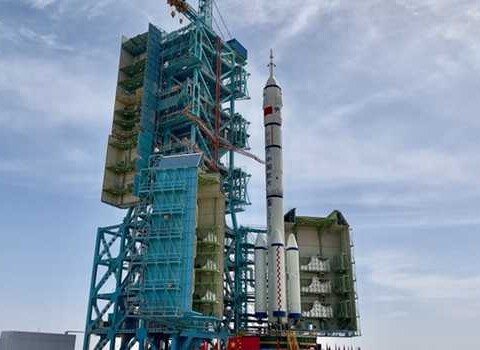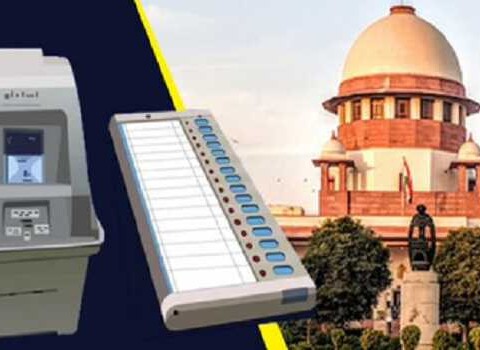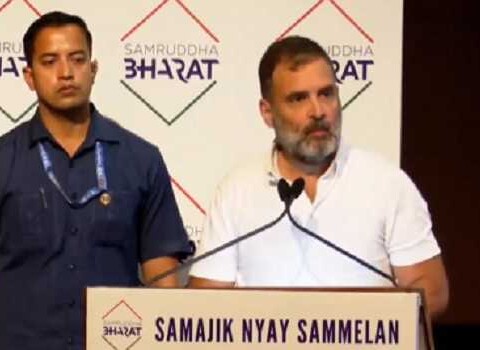Recently JKUT has notified guidelines for levying of property tax in urban areas which are enforceable from the April 2023.This notification took every citizen by surprise and people started to discuss the much-hyped property tax as per their perceptions and experiences. Since every city/town dweller is directly or indirectly a stakeholder in the levying of Property tax, it has turned into a hot topic for each household, and on the streets.
Despite very clear guidelines, understandable to majority of the city dwellers, explanations, and evaluations, mostly misinterpretations, are pouring in from one and all. Some express their fears, some use wait and watch to gain reasonable understanding to appreciate the guidelines, while some are ready to pay the tax.
Despite the uneasy and edgy approach by most of us, let all urbanites realise that they all live in a city or a town, they belong to. If the city is in good shape and health, neat and clean, it surely gives a virtuous feeling. To attain it, one and all have to become an active part of the city and show belongingness towards it.
For that, responsibility of each individual assumes significance Our cities and towns are confronted with wide range of urban challenges, demanding involvement of all of us.
Under these circumstances ULBs which look after provisions and maintenance of services and amenities seem to be more or less helpless in augmentation of matching fiscal resources to ensure healthy and sustainable cities/towns.
If these urban maladies are not addressed well in time, reprisal would demand much heavier price, in any form. With rapid urbanization, problems would aggravate, putting services/ amenities on the brink of collapse and an eminent urban disaster.
Need for levying property tax
Jammu and Kashmir has over last four decades recorded unprecedented urban growth. The rapid urbanization has been accompanied with host of challenges for urban development and management. In the face of ever increasing pressure and demand, provision of services and amenities to people has become an uphill task.
The scarcity of fiscal resources with Urban Local Bodies has further deepened the problems and it has assumed a crisis situation in most of the cities and towns. This has made fulfilling of responsibilities by ULBs very tardy, and delivery of services very poor.
With the rising economic cost, public expenditure on account of stupendous increase in urban population, has exceeded revenue receipts and grants/devolution funds. The gap is ever widening, generating a complex mismatch between the prevailing economic strength and the ever-growing requirements of urban management and development.
It has resultantly increased the per capita local government expenditure in all cities and towns. Not only this, in whole of the country aggregate urban expenditure requirement is more than Gross National Product. With the implementation of 74th constitutional amendment there has been a direct role of ULBs as parastatal agencies in the provision of public services.
Since ULBs are starving of funds, this deficiency of funds hampers access to the finances available under various schemes and as grant-in-aid on account of inability to provide matching shares. However, Government through various agencies has been trying hard by directly getting involved in substantiating the delivery of services/amenities which otherwise fall within the functional domain of ULBs.
It has necessitated to probe and tap unearned fiscal resources like sanitation cess, offensive trade tax, hoarding charges, tolls, parking charges, etc. The implementation of such urban reforms has also been a precondition for release of funds under JnNURM and other sponsored schemes. In such a scenario ULBs have been constrained to explore all possibilities of raising finances to improve their functionality and service delivery.
Property tax as such has assumed increased significance in giving fiscal self- reliance to ULBs. It has all potential to improve the financial health of ULBs and make these responsive to the delivery of services to the urbanites.
In the present format it will act as the biggest single source of local government finances and increase revenue receipts much needed to maintain, upgrade and provide essential services.
As such the significance of the property tax can hardly be undermined. It is really a step in right direction and has in it, inherent facets of fulfillment of prerequisites for tapping and accessing the funds which otherwise ULBs are unable to access, lift and utilize.
As estimated by the HUDD Department property tax in the JKUT would generate an income of Rs. 115 crores yearly which will substantiate to the requirements of estimated urban expenditure of Rs. 850 crores. HUDD Department has also clarified that levying of property tax is practice not only in India but across the world.
Need for rationalisation of residential property tax regime
In contemplation of the tax regime due consideration to the geographical disparities, urban legislation enforced till date, existing ground realities, policies under master plan, guidelines for smart city mission and many other vital aspects of the cities and towns of the J&K seem to have been ignored.
Urban policy makers and planners of the JKUT seem to have relied more on reducing the slab values in the regime with exception of exemption for attic in built area and imposed it without pursuing any improvement, efficiency and coverage in any form to revitalize judiciously property tax regime meeting requirements of changing urban dynamics and urban economics. Existing regime has a number of inherent gray areas which if left unaddressed would have far reaching impact on the future of our cities and towns, swaying cross section of the urbanites in numerous ways;
1. Exemption up to 1000 square feet built up area may well be accepted and acknowledged in urban areas where there is a preponderance of apartment/flatted development.
The urban landscape of J&K is dominated by individual houses with one or more than one stories, with low land holdings and built up area, with multiple floors and families living in older parts of the towns and cities.
Therefore, inherent drawback in exemption is that people living in houses up to 1000 Sq ft built up area flats and individual houses with sound economic base would get the benefit under the existing regime while as people living in older parts of towns and cities, despite having lesser living space on ground and subsequent floors,(e.g. 400 sq. feet area on ground floor with three or more floors occupied by urban poor have to pay tax despite poverty) with almost no land appurtenant, occupied by multiple families would come under the purview property tax. As an urban policy decision it can have far reaching socio –economic implications in the long run like depopulation from core, growing number of destitute due to forced and untimely transfer of property right through family sub division, heavy environmental improvement cost. It is bound to make our towns and cities more sprawled through induced suburbanization. There is a need to rationalize tax regime not only to save the local bodies from cloaked impact but also to safe guard urban poor living in older parts from unmerited tax.
2. Tax regime also spells out exemption of land appurtenant to built up areas up to two times the area covered on ground of the structure. This factor needs reassessment and rationalisation with the view that over the years ULBs have enforced development controls /building bye laws compelling and constraining people in cities and town to expense their prized land in the form of set back without any viable utility and use. These areas are acting as shadow /gray area in the premises, there inclusion in appurtenant seem unjustified. Setbacks enforced as per the development regulation have constrained the individual houses to leave a sizeable costly land. Rationalisation to the extent of 75% land under set backs (three side set back) need to be ensured through exemption in calculation of land appurtenant to each building for property tax. Unlike JKUT, other parts of the country has had building controls much flexible since long allowing maximum utilization of land for productive purpose to the urbanites of these urban area providing relative advantage to them than their counterpart in JKUT. Outside JKUT land utilization in low rise development is between 80-90% while as it is 30-50 % in JKUT, only due to enforced bye law .
3. It is important to note that urbanization in J&K has been characterized by spontaneity in its growth mainly due to failure of the authorities to augments and provide planned housing. These residential areas are completely deprived of open spaces and play areas with premise holding great significance for health of inmates of these areas. Implementation of exemption up to twice the covered area would prove a regressive measure and force subdivision of the holdings and increase the built up area at the cost of much needed open spaces. It will not augur well in the interest of curbing climate change and making cities and towns sustainable as enunciated in various plans and policy documents. The cap on the land appurtenant can have fall out by forcing people to move out to outskirts for luxury of liberal laws and would add more woes in the process to ULBs in immediate future. The cap on appurtenant needs rationalisation to reinvigorate the urban economic forces and discourage further decentralization of people and economic activities from these area to outskirts. It is also likely to put pressure on ULBs, generate impediments in planned development, and accelerate unhealthy growth with extremely high densities.
4. The tax regime notified for implementation is not broad based and inclusive , but is contradictory to the foremost polices outlined in master plans and other urban development strategies / policies wherein emphasis is laid on the inclusiveness and greater participation of people at large in the development and planning process. It seem that no attempt has been made to make these consistent with prevailing planning ideology, and the ground situation. Results of this regime where ever implemented reflect 30-40 percent efficiency in tax collection. The regime stands adopted and implemented in various parts of the country, has continued exemptions and ignored the economic factors of individual families also which is a must in many ways with growing urbanism. In case economic/income factor is included in the regime, it would minimize exemptions and make regime just and highly inclusive/participatory, enlarge tax base/collections too. This will also ensure participation of poorest of the poor, give them sense of belonging in development process of the cities and towns they live in.
5. The slab factor used in the tax regime is intrinsically biased in favour of large size slabs, though apparently moderate is regressive against small /medium slabs sizes. The factor attached should have been proportionate to the bulk of slab but seems to have been adopted without looking into its implications on lower/medium sections of urban community. It also needs rationalisation for ensuring either equity or cross subsidization which has been ignored by policy makers.
6.In age and construction related factors also, inherent loopholes need to be addressed. With respect to age of housing stock in older parts and urban villages which are predominantly more than 60 years old, and beset with obsolescence, and are in a state of complete disrepair, attaching 0.60 as a factor to these structures and 1.0 to new structures is unjust. In immediate future it will have impact through reduced housing stock due to continued unattended dilapidation and obsolescence.
7. In case of factors pertaining to type of construction people inhabiting in tin sheds, wooden or tarpaulin shacks have often an area lesser than 1000 square feet. These are predominantly temporary, mostly without title of land, could have been left out as exemption has been provided up to 1000 square feet under slab factor. Generally, these type of structures are very less in number especially in Kashmir and parts of Jammu due to severity of climate and mostly belonging to poorest of poor sections in urban areas.
8. The notified tax regime does not have any consideration for level of infrastructure, accessibility, e.g. structure close to nodal facilities, transit lines and structure located deep inside devoid of facilities /amenities, transport /market are charged at the same rate which is unjustified and needs to be looked into to ensuring equity in tax viz-a-viz available amenity and comfort level.
For example properties of identical size with one located at Parrypora adjacent to road another inside in Gulbarga colony, Srinagar will have to pay more or less the same tax. Rationalisation is needed to avoid inherent injustice in levying tax of structure as valuation of land by government is available on estate/locality basis only.
Taxes, especially property tax, is full of advantages irrespective of the above mentioned gray areas. It possesses all the positives for cities/towns, ULBs, government, the people inhibiting and visiting these places, however, catalog of defects has to be mitigated with appropriate timely intervention and greater participation of the stakeholders.
These need to be made broad-based ensuring inclusiveness rather than stressing more on imposition. Community at large shall be taken on board so that it adjusts and prepares itself for this. The process of collection of property tax not become taxing.
Hammid Ahmad Wani, Professional Town Planner.











